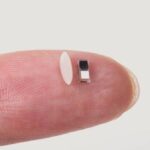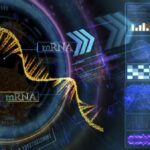In an April article in the journal Advanced Materials, a team of researchers from UC San Diego, the University of Chicago and Northwestern University describe a new material they have invented that can be injected intravenously shortly after an attack to begin healing the heart muscle.
Karen Christman, one of the many authors of the article, told UC San Diego Today, “Preventing heart failure after a heart attack is still a major unmet clinical need.” With this therapy, however, early intervention after an attack encourages tissue repair and helps to heal the heart muscle.
Nathan Gianneschi, at Northwestern University, describes the broader potential of this therapy “for several diseases, including everything from macular degeneration to multiple sclerosis and kidney disease.”
The injectable is a protein-like polymer (PLP) that gets activated by stress or inflammation. The protein is Nrf2. It stops heart cells from degrading after an attack. KEAP1, another stress-activated protein, binds with Nrf2, making it less effective. Creating the PLP Nrf2 mimic confuses KEAP1, acting as a decoy and allowing the Nrf2 protein to promote tissue repair and reduce inflammation.
In laboratory rat blind studies, some animals received the polymer after a heart attack while others didn’t. Up to five weeks after injection, the sedated rodents received MRIs that showed better cardiac function and the healing of heart muscle tissue in those who received the polymer treatment. The image at the beginning of this posting shows the dramatic difference between heart muscle cells treated with the PLP from those without treatment.
States Gianneschi, “Proteins are the molecular machines that drive all essential cellular function, and dysregulated intracellular protein-protein interactions are the cause of many human diseases. Existing drug modalities are either unable to penetrate cells or cannot effectively engage these large disease target domains. We are looking at these challenges through a new lens.”
What makes the PLP different from other heart attack treatments?
- It mimics the protein that is the master regulator of cellular stress and repair.
- It works within the cell, unlike other drug treatments that target cell-surface receptors or extracellular processes.
- It is less invasive than other drug therapies because it is administered once through a single low-dose intravenous injection.
- In targeting inflammation, it lessens individual cell death.
- It targets intracellular pathways that conventional heart therapies cannot access.
- It increases the expression of 117 different genes, 33 cytoprotective specific to tissue repair, and 84 involved in regulating antioxidant response within DNA.
So, the PLP’s ability to reprogram gene expression, target intercellular pathways, and the body’s natural autoimmune and stress response represents a significant treatment breakthrough that may do more than just heal broken hearts, including the following:
- Macular Degeneration (nAMD) because the PLP can be used to inhibit abnormal blood vessel growth in the eye common to this disease, and offering a longer-lasting treatment than current drugs.
- Multiple Sclerosis (MS), where degradation of the Nrf2 protein can be inhibited, targeting immune and inflammatory pathways and suppressing the disease progression.
- Kidney Disease (KD) and in particular Polycystic KD, where the PLP could enhance cellular resistance to stress and inflammation by targeting oxidative stressors to slow the disease progression.
While still proof of concept, further studies will help optimize the polymer material design and dosage for treating heart attacks, with plans to begin larger animal model studies before human clinical trials.









